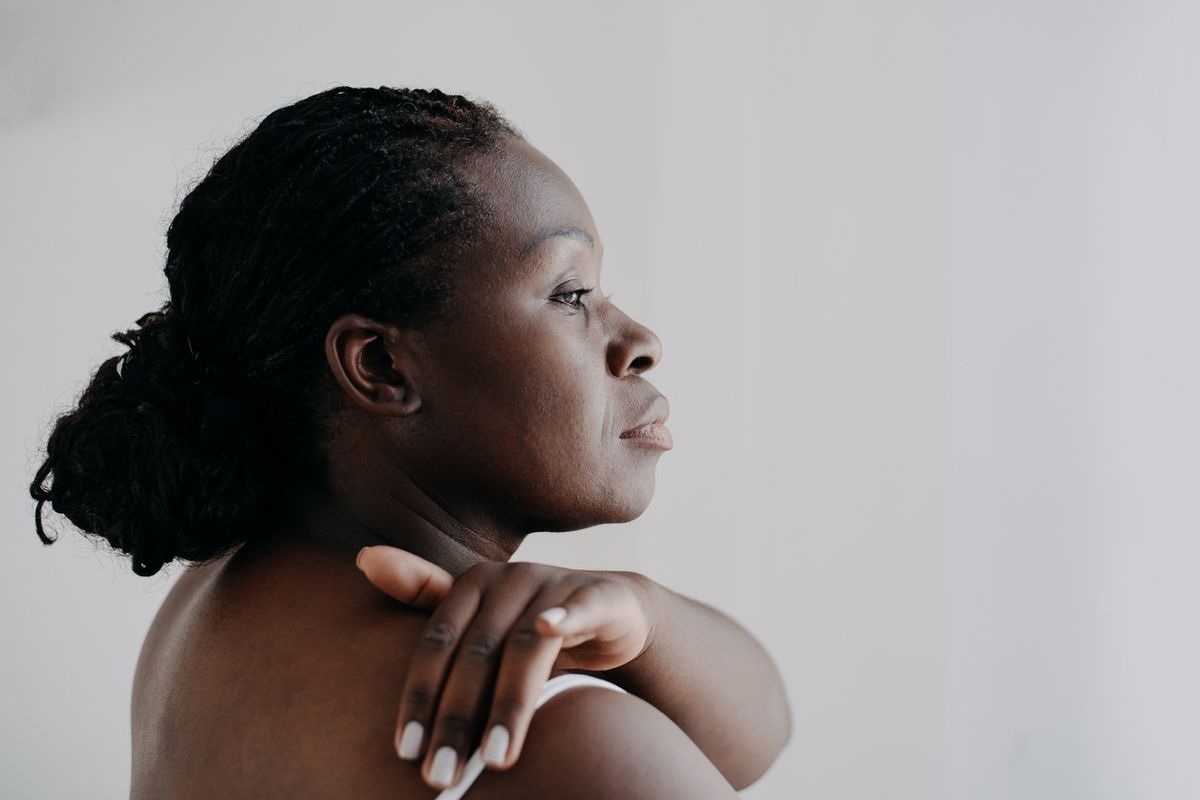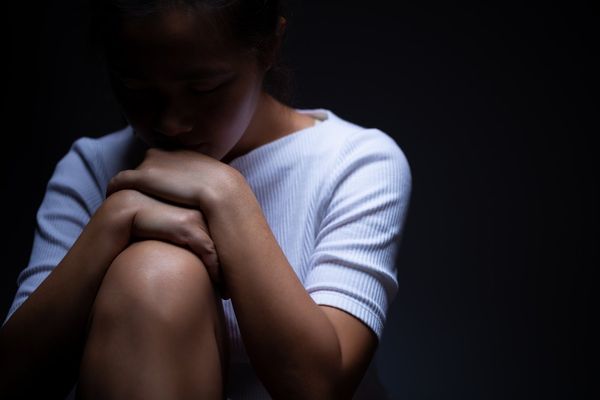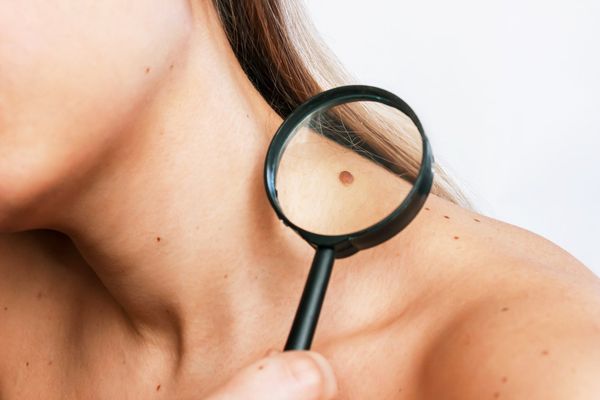When Jacqueline Smith volunteers at events to promote the importance of skin cancer screening, she’ll offer sunscreen to anyone who stops by her table or booth.
Smith said she hears, “Nope, I don’t need that,” a lot from people of color.
Determined, she offers it again. “Yes, you do,” she says. “You really do. Just take it. Humor me.”
There’s a story behind Smith’s persistence. More than 15 years ago when she was 21, Smith was diagnosed with melanoma, the most serious type of skin cancer. It develops in the cells that produce melanin, which is responsible for skin tone. While melanoma represents just 1 out of 10 of all skin cancer diagnoses, it’s responsible for the majority of skin cancer deaths.
Statistically, Smith’s risk should have been very low. Although melanoma is one of the most common cancers among younger adults, particularly women, the average age at diagnosis is 65. Smith is also African American, and melanoma diagnoses are rare among people with darker skin. According to the American Cancer Society, the lifetime risk of developing melanoma is 1 in 38 for white non-Hispanic individuals, 1 in 167 for Hispanic individuals and 1 in 1,000 for Black non-Hispanic individuals.
Once diagnosed, however, Smith faced a higher risk of death. Despite the rarity of melanoma diagnoses among people of color, those who are Black, Hispanic and Asian American/Native American/Pacific Islander are
more likely to die from the disease than white people.
“Melanoma is not very common in people with darker skin types compared to people with fair skin,” said
Janiene Luke, M.D., a board-certified dermatologist and associate professor and residency program director at the Loma Linda University department of dermatology in California. “The issue is that melanomas are diagnosed at a more advanced stage for people with darker skin types, and the survival rate tends to be lower because of that.”
When delay is deadly
Smith didn’t fit the profile of darker-skinned melanoma patients for another reason. She had a cutaneous melanoma, which is associated with ultraviolet (UV) exposure, and not the acral lentiginous melanoma more commonly seen in darker skin. Acral lentiginous melanoma, which is found on the palms of the hands, soles of the feet, and finger and toenail beds, is most commonly associated with reggae legend Bob Marley, who died from the disease. He had a dark spot on his toenail initially mistaken for a soccer injury, and died four years after receiving a melanoma diagnosis.
The thing that often makes finding and treating melanoma difficult in people of color is that acral lentiginous melanoma doesn’t have a clear association with sun exposure, since it appears in areas that usually aren’t exposed to the sun. In addition, the fact that people of color are at low risk for melanoma can make it less likely for many to get an early diagnosis.
Diagnoses can also be delayed if people can’t travel to see a dermatologist or pay for a visit to have a suspicious growth examined. Luke said more research is also needed to help determine additional risk factors for melanoma among people of color, along with
more education for healthcare providers (HCPs) and individuals about identifying melanoma in darker skin.
“It’s important to make sure that, as we’re training newer dermatologists, they’re able to see a wide variety of images and understand that clinically there may be some differences in appearance in someone with fair skin as opposed to someone with darker skin,” Luke said.
Joel Bervell, a Washington State University medical student who uses social media to educate viewers about racial bias in healthcare, shares information about skin cancer and darker skin in some of his videos. In one, he showed images of acral lentiginous melanoma on darker skin, and explained how it was more prevalent in people with darker skin as well as in people with Asian ancestry.
Bervell said he later received a message from a follower who noticed an unusual discoloration on the bottom of their foot. After watching the video, they made an appointment with an HCP, received a biopsy and the mark turned out to be precancerous. Without Bervell’s video, the person said, they wouldn’t have thought to check their feet for discoloration and likely wouldn’t have seen marks there as a cause for concern.
“Stories like that show the importance of sharing diverse images and also challenging the common beliefs that we have about different health conditions,” Bervell said.
Sharing her story
While moles and spots can be common on people of any skin tone, HCPs like Luke suggest people check for any that are growing, changing, oddly shaped, bleeding or painful, and report them to an HCP.
That’s what Smith did when she first noticed an almond-shaped lump near her bikini line. As she watched it over time, she noticed it was growing. It was growing slowly, but it was still getting bigger. Two different providers didn’t think it was serious, but Smith had a feeling something wasn’t right.
Finally, she had a provider order a biopsy. The result was stage 3 melanoma.
“When people think of melanoma, they think of middle-aged Caucasian folks,” Smith said. She didn’t fit any of the higher-risk categories for the disease and didn’t spend a lot of time in the sun when she was growing up in New Jersey. About 1 in 10 people with melanoma have a family history of the disease, but Smith said she's the only one in her family to be diagnosed with melanoma. To this day, she doesn’t know what might have put her at risk.
Smith had the lump removed, and for the next four years, she had scans to make sure the cancer hadn’t returned. “Watch and wait” was the plan until another lump returned in the exact same place. And again, the diagnosis was stage 3 melanoma.
This time, her medical team said she might not have long to live.
Smith decided to have the entire chain of lymph nodes in her groin removed in hopes of preventing the cancer from spreading to other organs. She also became one of the first people to enroll in a clinical trial for a modified version of interferon, which wasn’t as hard to take as the existing drug at the time. She also had radiation every weekday for four months.
Smith has now been cancer-free for 15 years. She went on to complete a doctoral degree in medical sociology and studied the experiences of women under the age of 30 who survived melanoma. In 2023, she also prepared to welcome her first child, an experience she considers a miracle — something she thought wouldn’t be possible after undergoing cancer treatment.
Smith has made melanoma advocacy a part of her life ever since her surgical oncologist asked if she’d like to be a part of the education committee at Moffitt Cancer Center in Tampa, Florida, where she received treatment. She continues to spread awareness about the disease, the importance of participating in clinical trials, and how melanoma can affect anyone, regardless of age and skin tone.
“Be your own health advocate,” she said. “You know your body and as much as you appreciate hearing, ‘Oh, there's nothing wrong,’ when you have a feeling and you know something isn’t right, keep going back. Get a second opinion. It can be the difference between life and death.”
Melanoma Resource List
HealthyWomen Resources
- My Melanoma Was Dismissed as an Inflamed Hair Follicle
- The ABCDEs of Spotting Melanoma
- Melanoma 101 — Risk Factors, Diagnosis, Stages and Treatment
- I Was Wrong to Think Ethnicity Made Me Immune to Skin Cancer
- What Is Melanoma? A Reel by Dr. Obioha
En Español
- El ABCDE para identificar melanomas
- Melanoma 101 — Risk Factors, Diagnosis, Stages and Treatment
- Estaba equivocada al pensar que la etnia me hizo inmune al cáncer de piel
- ¿Por qué las personas de color tienen más probabilidades de morir de cáncer de piel?
Additional Resources
- Melanoma - Symptoms and causes
- Melanoma Skin Cancer | Understanding Melanoma
- Racial Disparities in Skin Cancer Diagnosis, Prognosis, and Treatment - Oncology Nurse Advisor
- How to prevent skin cancer (aad.org)
- Black Derm Directory | BDD | Skin of Color Dermatology
This resource was created with support from Merck.
- Skin Cancer - HealthyWomen ›
- Women’s Health Concerns Are Often Dismissed - HealthyWomen ›
- Fast Facts: What You Need to Know About Skin Cancer - HealthyWomen ›
- What Is Melanoma? A Reel by Dr. Obioha - HealthyWomen ›
- Black Dermatology: How Skin Color Affects Skin Care - HealthyWomen ›
- What Is Melanoma and Why Are Melanoma Rates Increasing? - HealthyWomen ›
- ¿Qué es el melanoma y por qué están aumentando sus tasas de incidencia? - HealthyWomen ›
- The ABCDEs of Spotting Melanoma - HealthyWomen ›
- Skin Cancer Warning Signs - HealthyWomen ›
- How to Conduct a Skin Cancer Self-Exam If You Have a Darker Skin Tone - HealthyWomen ›
- Monica and the Melanoma Check - HealthyWomen ›






